12 cottage garden ideas that will help you create a dreamy and delightful space
These cottage garden ideas are gorgeous and natural

Despite the name, cottage garden ideas aren't just for period cottages. Yes — you can have a cottage garden even if you live in a modern home or in a town or city.
Cottage gardens may look natural, but they are always a product of careful planning and year-round care. I've picked out my favorite cottage garden ideas, looking at ones that I've photographed myself, as well as speaking to experts for top tips.
If you're looking for backyard ideas that celebrate beautiful blooms and natural gorgeousness, cottage gardens are an enchanting choice.
Colorful cottage garden ideas
If you're planning a cottage garden and are seeking out inspiration, these ideas for flowers, decor, and more will help you get started.
Where relevant, we've curated highly-rated picks from top-rated retailers, in order to help you start creating your own cottage backyard.
The prices below were correct at the time of publishing this article.
1. Mix annuals and perennials

To create lots of color in your cottage garden, make sure to plant a mixture of annuals and perennials. Annuals only last a year, but they’ll put on a great show. Try plants such as clary sage, marigolds, and cornflowers.
Get small space home decor ideas, celeb inspiration, DIY tips and more, straight to your inbox!
You can put them in this fall, but they could also be planted in spring, and the good news is that they’ll sprinkle their seeds so you don’t have to re-sew them.
When it comes to perennials, there’s plenty to choose from but you might include scabious, which last for years and get bigger and bigger.
2. Sow the seeds of hardy annuals

Growing annuals from seed isn’t tricky even for inexperienced gardeners. Simply prepare a patch of sunny soil by raking until it’s smooth and even. Then he turns the rake over to make furrows for the seeds between around 1.3 to 0.6cm deep and 7.5cm apart.
Sprinkle the seeds in and rake over the soil, then water if there’s no rain on its way.
3. Plant perennials
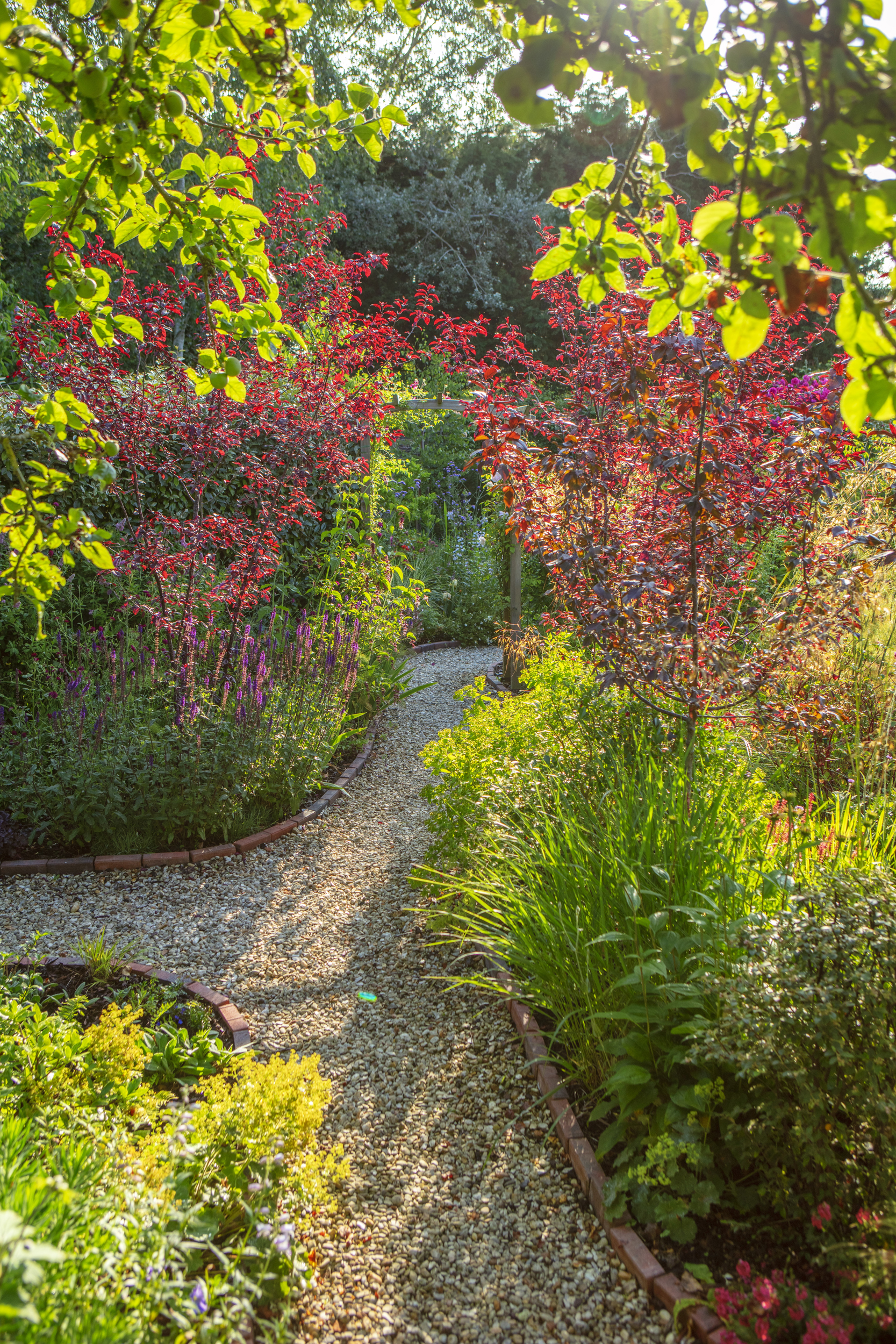
You’re likely to be planting perennials you’ll find in pots at the garden center. One of our favorites is penstemon.
You’ll just need to dig holes for these then tap out of the pot and plant in the soil. Fill around them, and give them a good watering once they’re in.
4. Layer plants
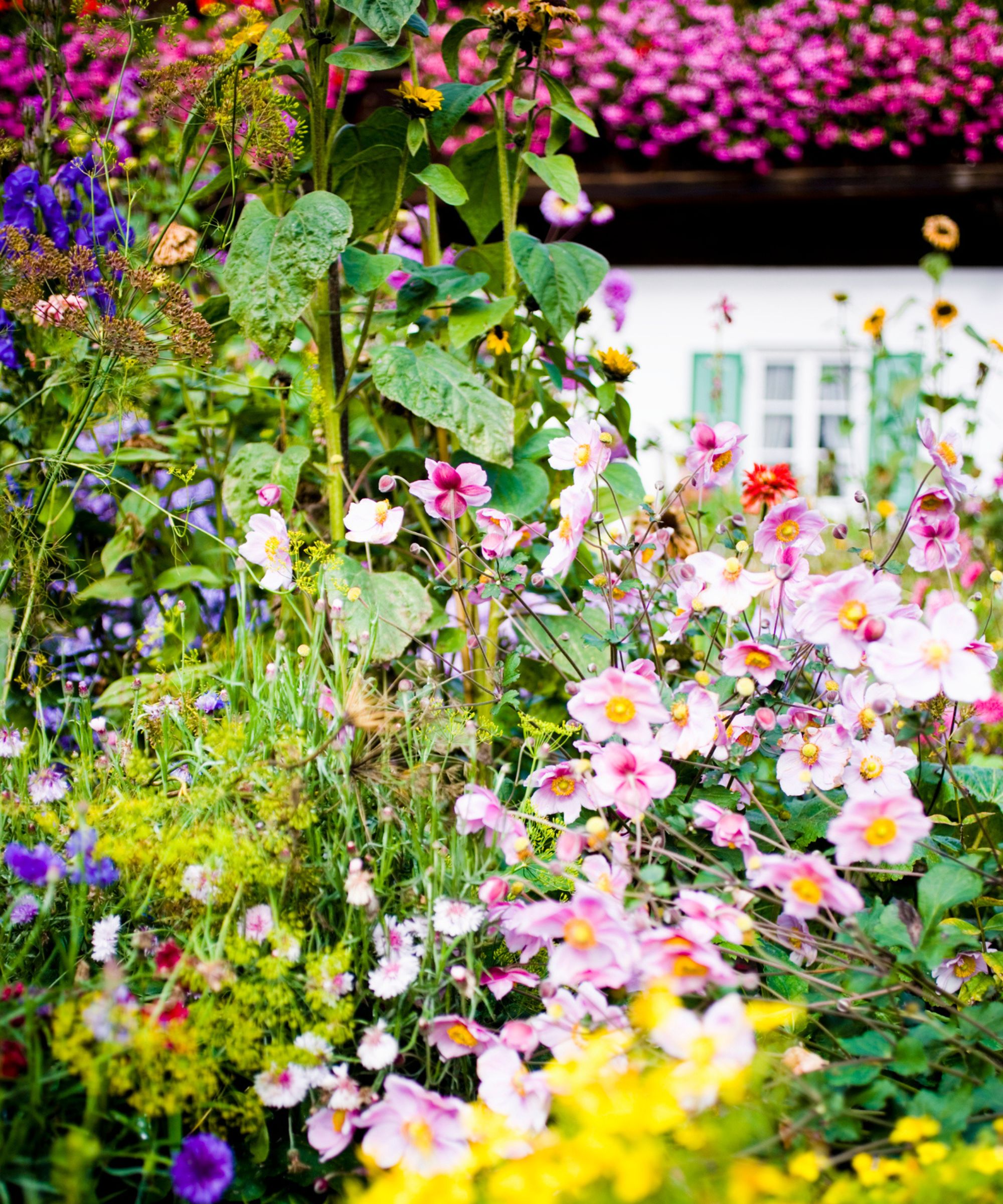
A cottage garden needs plants at a mixture of heights in a layered effect. You can put tall plants at the back of beds with lower-growing ones towards the front for a classic look. Alternatively, you could try the pyramid structure. This would have tall grasses and evergreens in the middle of a bed with smaller flowers in front, then low plants and those that form a carpet nearest to the bed’s edges.
This will show off plants to their best effect if your cottage garden has paths that meander around the beds – and paths are important, too.
5. Add structure with pathways

A network of paths is important for a cottage garden. Allow the paths to meander, avoiding straight lines or defined patterns, and soften them with billowing plants that spill over, blurring the edges – Alchemilla mollis or erigeron are ideal for garden path edges.
What to use for them? In your cottage gardens design, there should be harmony between landscaping and the architecture of the house. Use materials in keeping with the look of the property; for instance, if it is a period home, consider weathered bricks, flagstone, wood chips, gravel or stepping-stones, for paths and garden paving.
I recommend pea shingle. You can lay it straight on to firmed and leveled earth that’s weed-free or put down a weed-proof membrane to suppress them, he explains.
As well as looking the cottage-garden part, a pea shingle path also allows the seeds that fall on to it to germinate, he says, so you’ll have even more plants.
6. Try adding fences
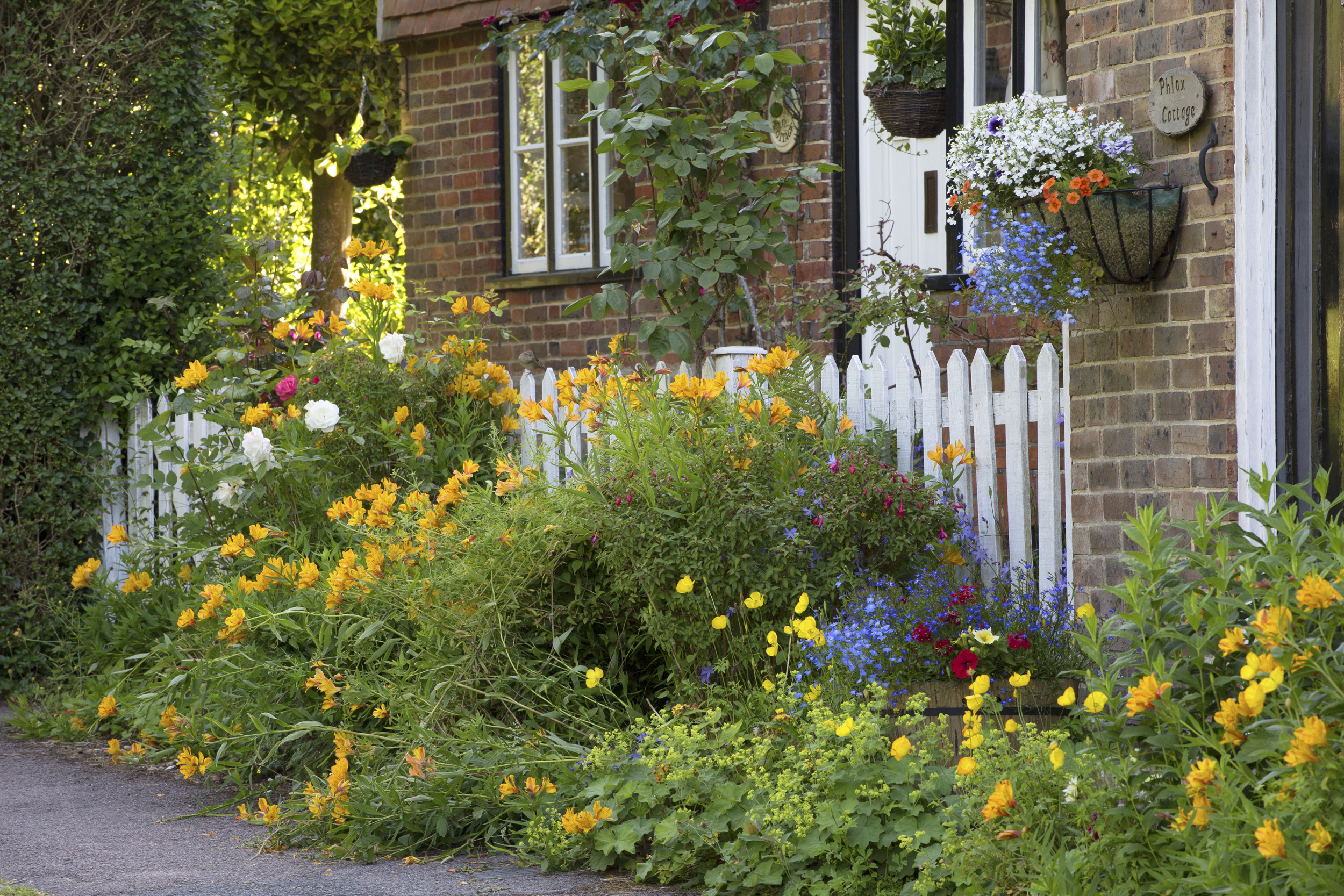
Consider enclosing a small cottage garden with traditional garden fencing, such as shabby chic painted timber pickets, woven willow or recycled timbers, to set off the effect and give order to the visual effervescence.
Tall structures, including arbours, pergolas, obelisks or trellis', can be used as supports for roses, honeysuckle, wisteria, jasmine and other scented climbers, while traditional, weathered benches can help to divide the yard into rooms.
7. Create focal points in a cottage garden

Add a touch of whimsy with decorative items as focal points, such as antique watering cans, old tools, flower-clothed obelisks, or sundials — but use restraint so as not to complicate the overall feel of the cottage garden.
8. Create a seating area
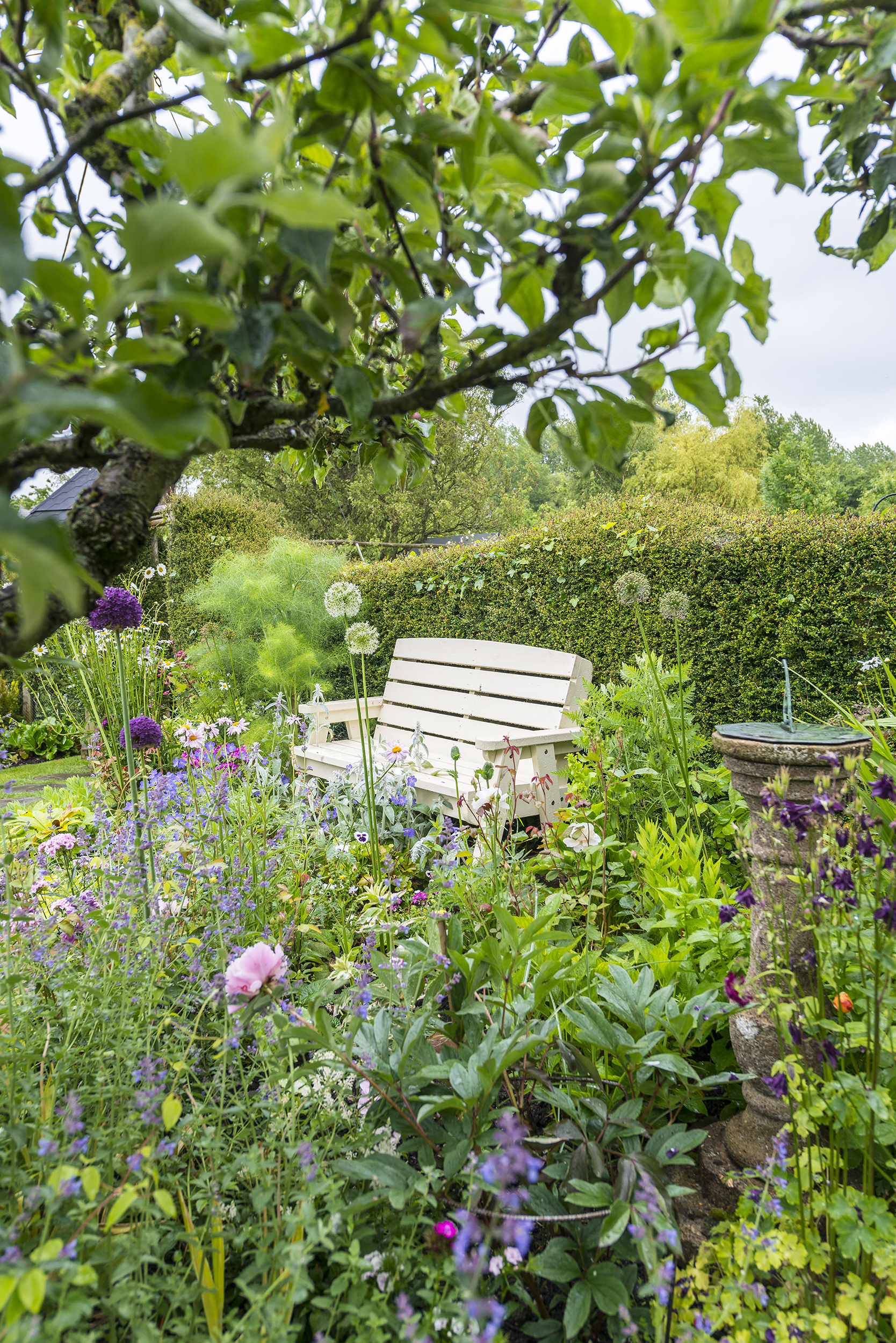
Well-positioned seating is essential in a garden so that you can sit back and admire your work and really enjoy the beautiful and peaceful surroundings. Avoid anything cumbersome; instead opt for wrought iron garden furniture for a romantic and traditional look.
After all, there’s no better way to really make the most of your lovingly tended garden than dining al fresco on a balmy summer's evening. Vintage, ornate wrought iron bistro sets and curvaceous mellowed wood designs will best complement the romantic ambience.
9. Choose scented plants to line walkways

Walkways – simple herringbone paths and gravel paths snaking through flowerbeds – are a perfect way to be immersed in the colors and scents of the garden, but they are also practical, allowing easy access for tending to plants and garden maintenance. Choose traditional cottage plants that release scent when you brush past. Find tons of ideas for garden borders in our guide.
10. Add a summerhouse
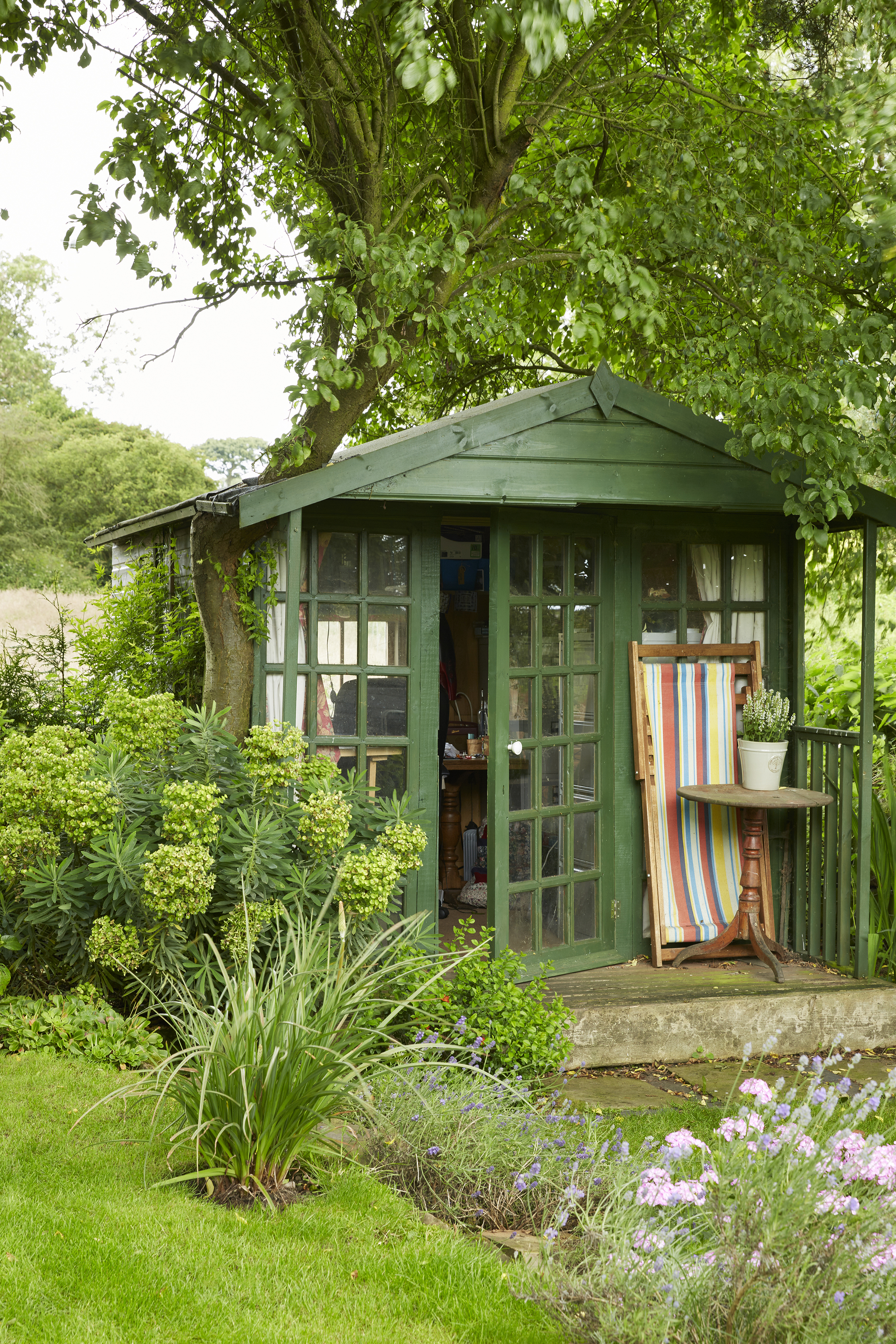
Cottage gardens are all about capturing a wild, romantic, playful and whimsical atmosphere, so what could be a better addition than a secret summer house or garden room hideaway? The perfect place to pen a novel or paint a masterpiece!
For inspiration, see our gallery of garden room ideas. And learn more about adding a garden outbuilding in our expert guide.
11. Add traditional looking garden accessories
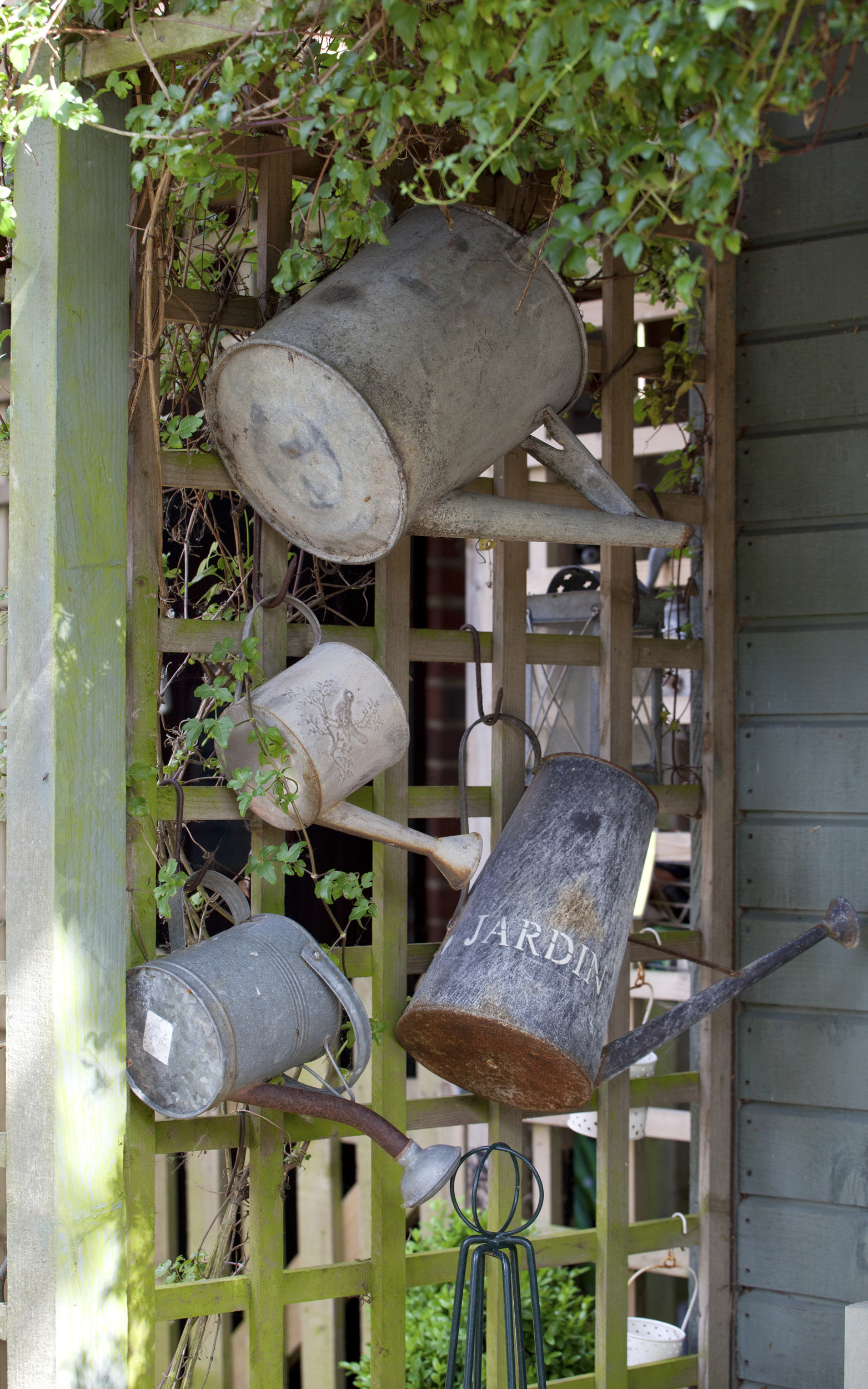
Cottage gardens should have accessories. Choose vintage garden ephemera and invest in garden equipment created using heritage techniques, such as old iron watering cans. Not only do they guarantee quality, they also make for pretty displays, and distract from the structure of the shed.
Remember, you'll then need somewhere to store your tools and gardening essentials in your cottage garden, but be sure to make any garden shed as individual and characterful as possible. Add some vintage or rustic elements to the exterior, and consider painting it in a complementary color to soften its impact. Painting the shed in a pale, pastel hue will help it blend in with the surrounding frothy planting, whereas a darker tone will act as a backdrop to the bright, cottage garden flowers.
Then organize your beautiful tools with the help of our garden shed storage ideas.
12. Keep it classic with climbing roses
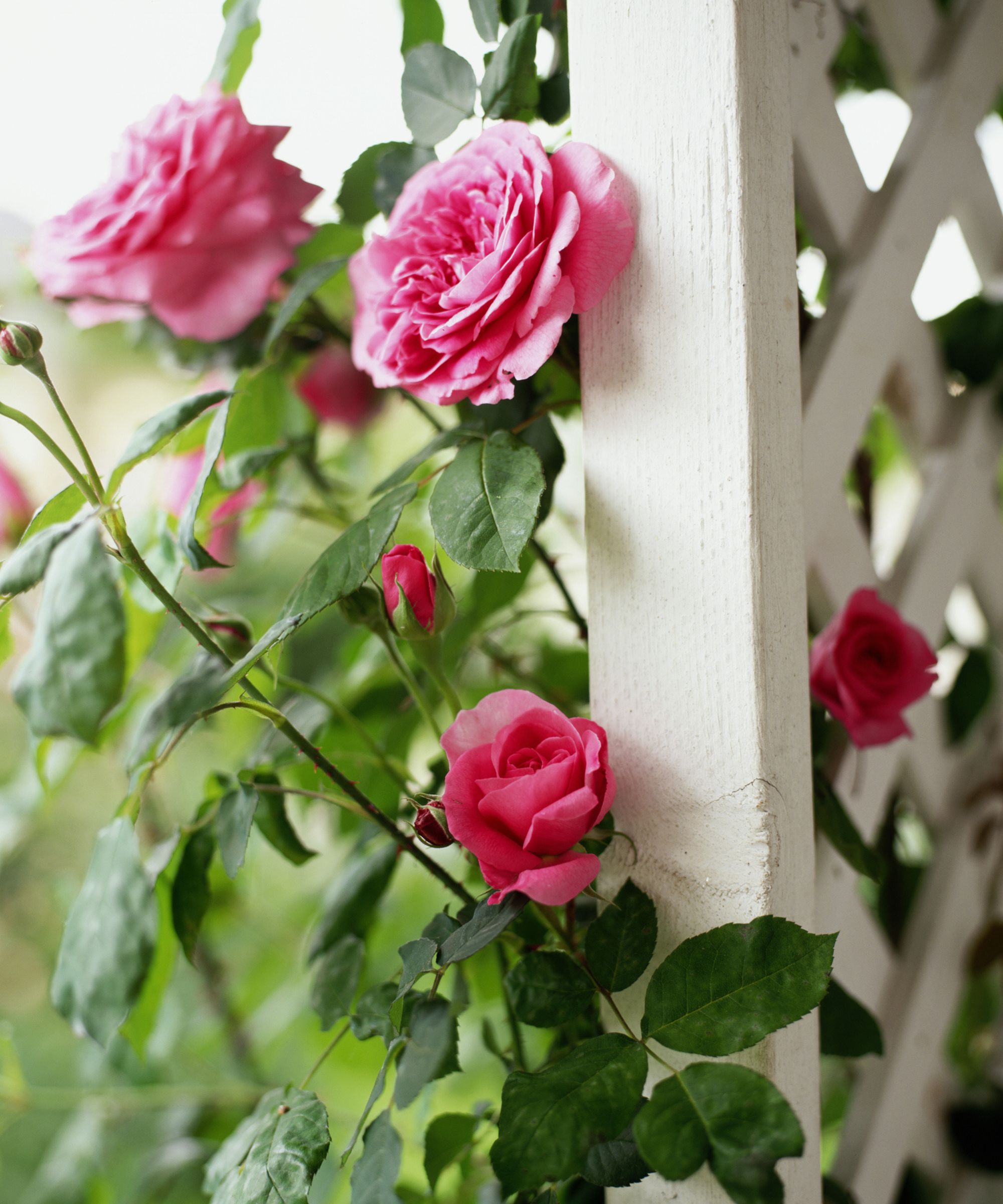
You can’t beat traditional climbing roses to inject a touch of charm into a cottage garden. The perfect foil to weathered brickwork and masonry, roses are essential for completing the chocolate box look.
Find out about planting roses in our guide.